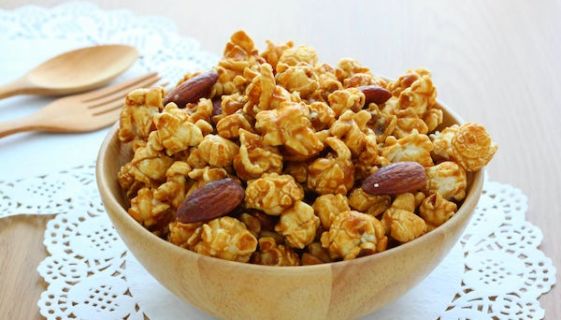The vibrant colors of May are beautifully represented in our slightly sweet and deliciously healthy beet hummus recipe. Hummus has been a long-time staple of the Mediterranean diet and has become a favorite among health enthusiasts, not only because of its rich and fulfilling taste, but also because it’s packed full of anti-inflammatory properties and healthy fats; it is naturally gluten- and dairy-free; and it’s a great plant-based protein option that provides a huge dose of gut-health supporting fiber.
This homemade hummus recipe blends spice-roasted beets, chickpeas, lemon, garlic, nut butter and olive oil to create a bright and tasty dish. Beets are a powerhouse for detoxification and increased blood circulation, and so give traditional hummus an extra nutritious and delicious boost. They add a touch of earthy sweetness and spectacular color. Our vibrant and creamy beet hummus is a versatile dish that can easily be added to your favorite savory and sweet meals. You can serve it as a dip with your favorite vegetables, add it to a sandwich or wrap as a flavorful spread, or dollop it on a bed of salad greens for some added protein.
Ingredients
Roasted Beets
- 1 medium beet or 2 small beets, tops trimmed
- ¼ tsp olive oil
- 1/8 tsp cumin
- ¼ tsp coriander
- ¼ tsp paprika
Hummus
- ½ cup of dried chickpeas, cooked* or 1 15 oz. can of chickpeas, rinsed and drained
*If using canned beans, try to find them packaged in a glass jar or in a pouch
- 1 lemon, zested and juiced
- 2 large garlic cloves
- 2 Tbsp nut or seed butter (I enjoy it the best with peanut or almond butter)
- ¼ cup olive oil
- Salt and black pepper to taste
Directions
Roast beets:
- Preheat the oven to 450 degrees F. Place the beet(s) on a rimmed baking sheet and bake until fork-tender, approximately 60 minutes. Once cool enough to handle, peel the skin off the beet and cut it in half.
- Mix the spices with the olive oil and pour over beets to soak in while they cool.
Hummus:
- Place the cooled spiced beets, chickpeas, lemon zest and juice, garlic cloves, and nut or seed butter in a food processor or blender.
- Blend until smooth.
- Drizzle in olive oil as the hummus is mixing.
- Taste and adjust seasoning as needed. You can thin it with a teaspoon of water if too thick.
- Hummus will keep in the fridge for up to a week and you can freeze it for up to 3 months.
*Cooking Dried Beans:
- Soak your beans. Place the beans in a large bowl or jar and add double the amount of warm water and 1/4 teaspoon of vinegar or lemon juice. Cover and leave overnight or at least 4 hours. Drain your beans after soaking, and rinse with fresh water.
- Place beans in a large pot with 2 inches of water above beans (it is approximately 1 cup of beans to 1 quart of water).
- Cook for 30 minutes and add a sprinkle of salt and any spices or herbs you would like.
- Cook for an additional 60 minutes--the beans must be extremely tender for hummus. If you place a bean between your fingers there should be no resistance when you smash it.
- When cooked, drain (you can save the chickpea cooking liquid, this is “aquafaba”) and rinse with cold water. Cooked beans will keep in the refrigerator for 5 days or you can freeze them for up to 3 months.
NUTRITIONAL INFO:
Beets: One of the few vegetables with a deep red/purple pigment that provides our bodies with betalains, a class of powerful antioxidants that can detox the body, improve cognitive and physical functioning, and fight inflammation. With their blood red color it is fitting that they improve blood flow and blood pressure by widening our blood vessels to boost energy, and leave your skin looking great.
Chickpeas: Areas around the world that have been identified as places where humans live the longest (the so-called “Blue Zones”), are places where chickpeas are commonly found in the diet. These versatile and affordable beans contain folate, fiber, iron, phosphorus and healthy fats. Their high amounts of soluble fiber and plant sterol support a healthy gut microbiome. Chickpeas increase feelings of satiety and have been associated with a decreased risk of heart disease.
Olive Oil: A rich source of monounsaturated fats, olive oil contains antioxidants and omega-3 fatty acids that exhibit anti-inflammatory effects. Olive oil also promotes gut health, due to its antibacterial properties.
Cumin: Contains high amounts of flavonoids that act as antioxidants. It is also able to increase the activity of digestive enzymes and bile from the liver to assist in improving the efficiency of digestion. It has natural antibiotic and antimicrobial components as well.
Coriander: Rich in immune boosting, anticancer, anti-inflammatory and neuroprotective antioxidants. Also able to help our bodies flush extra sodium and water. Can help promote digestive and gut health along with decreasing bloating and abdominal discomfort.
Paprika: Contains capsaicin, which can reduce pain and inflammation and a natural appetite-suppressant. High amounts of carotenoids in a very small amount to help prevent damage from oxidative stress and assist the body in fighting disease. Carotenoids are best to be consumed with a little fat to ensure maximum absorption.
Citrus juice and zest: Packed full of a multitude of nutrients such as vitamin C, flavonoids, and fiber which aid in vascular protection, reduce inflammation, improve gastrointestinal function and health, and play an important role in preventing diabetes, cancer, and neurological disease. The vitamin C in the lemon juice will aid in the intestinal absorption of the iron in the spinach and peas.
Garlic: Considered a prebiotic, meaning it feeds the “good” bacteria in our gut and promotes a healthy digestive system. Research supports that the compounds in garlic, such as allicin, have antioxidant, anti-inflammatory, antimicrobial, and cardioprotective properties. If you chop your garlic 10-15 minutes before using it will have the maximum amount of active allicin.
Nut and Seed Butters: Great source of plant based protein, fiber and healthy fats, which can reduce your risk of heart disease and improve overall health. Very important to check the ingredient list to ensure there are no added stabilizers or sugar.



 Ananda Kaplan
Ananda Kaplan


